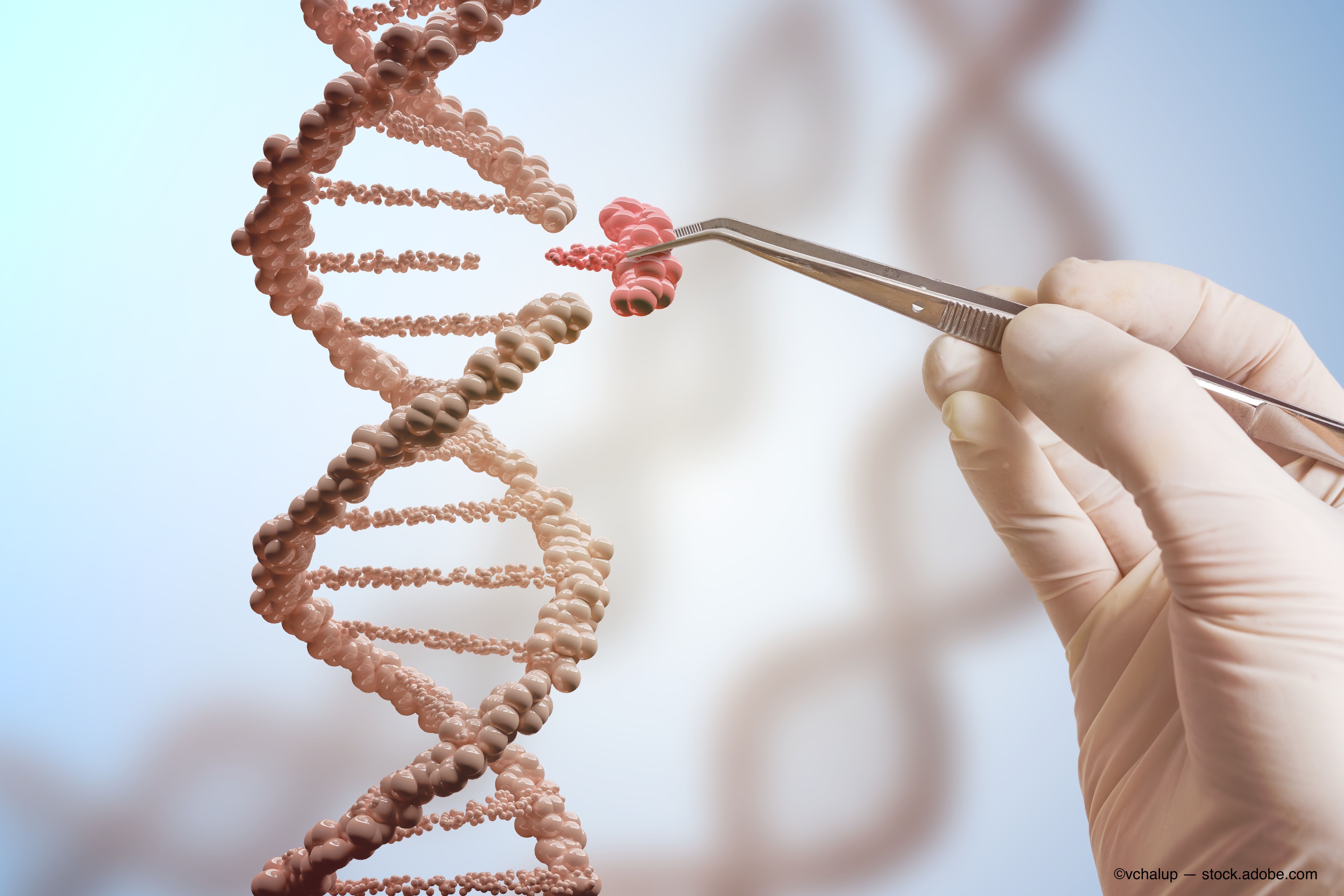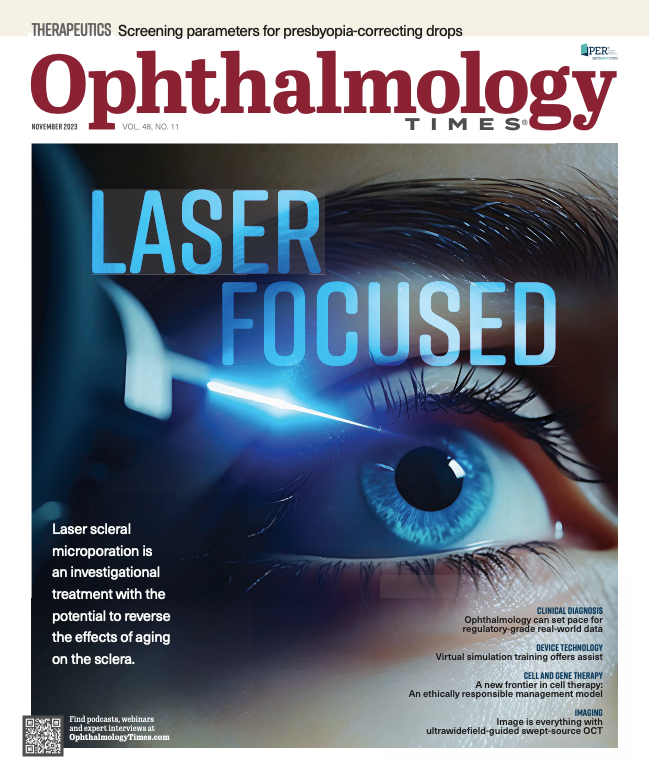Article
News
Digital Edition
A new frontier in cell therapy: An ethically responsible management model
Author(s):
The improvement of accessibility and education could drive changes in outcomes.
Leaps forward in the cell therapy arena have resulted in a proliferation of new, customized treatments that radically improve the prognosis for severe ocular disease. (Image courtesy of Adobe Stock)

Next-generation treatments like stem cell therapies and corneal endothelial cell transplantation have the potential to drastically improve the lives of patients. Leaps forward in the cell therapy arena have resulted in a proliferation of new, customized treatments that radically improve the prognosis for severe ocular disease. However, a number of institutional challenges stand in the way of these therapies being utilized effectively, according to one recent study.1 Significant systemic changes in blood, tissue and cell establishments (BTCs) are necessary to optimize these “living medicines,” the authors said. The European Union has some existing infrastructure for these BTC establishment improvements, according to a multinational team headed by first author Joaquín Delgadillo, Banc de Sang i Teixits (BST), Edifici Dr Frederic Duran i Jordà, Barcelona, Spain.
There is a diverse range of cell, gene and tissue (CGT) therapies that rely on these biologically-derived components, known as substances of human origin (SoHO). However, many aspects of the institutional infrastructure are the same from facility to facility and country to country. With these precepts in mind, the authors called for adoption of a new, universal management model to maximize the benefits of advanced medical therapy products (ATMPs).1
The study’s authors represented a number of institutions from multiple European countries, including Belgium, Finland, France, Ireland, the Netherlands and Spain. As a community, the authors wrote, stakeholders have a responsibility to produce safe, effective and affordable medicines, while also facilitating equity in patient access. This duty is shared by all members of the medical community, the authors emphasized, including “academic, non-profit, industrial, clinical, regulatory, patient advocacy or policy making representative(s).”
To establish more sustainable, equitable practices in the field of AMTPs, the authors proposed a new, intentional management model, called the “BTC for ATMP Development And Manufacture” (BADAM). While a centralized authorization procedure applies to ATMP development throughout the EU, there are additional regulatory pathways which exempt certain therapies from this authorization. These factors, which are authorized on a national level, include named patient use, compassionate use and hospital exemption (HE). The two former exemption pathways enable patients with life-threatening medical needs early access to investigative ATMPs, without enrollment in a clinical trial. In certain controlled hospital environments, a practitioner may be able to prepare and deploy a HE on a “non-routine basis,” if it meets national compliance requirements and receives approval from a “competent authority” in the same Member State. While these exemptions facilitate research and product development on a patient-by-patient basis, the regulatory restrictions limit collaboration and patient accessibility throughout the EU.
To offset the drawbacks of HE usage under Article 28(2), the study’s authors suggested establishing a registry or database throughout the EU. A centralized registry would allow practitioners throughout Europe to better understand the magnitude of HE use in ATMPs, as well as which attributes (including clinical needs, financial resources and documentation requirements) motivate the use or disuse of these exemptions. As the authors noted, the level of documentation required for HE authorization varies across the EU, as does the type of approval; some countries authorize specific products while others approve a range of ATMP products based on an establishment’s manufacturing license.1
The authors explained that limited financial viability of these individualized ATMPs narrows the range of institutions that can develop them. As a result, these SoHO-based therapeutics often fall into an “academic niche.” The authors explained, “HE has provided the regulatory niche for local manufacturing of ATMPs within an academic institution, including public facilities and non-profit organizations such as hospitals and BTCs.” The partnership between academia and BTC establishments is a vital basis for the BADAM model. The institutional knowledge held by these BTCs is crucial to the safe collection, transportation and storage of SoHO. Collaboration between BTC and nonprofit or research facilities can assist with donor recruitment and patient outreach initiatives as well. These BTCs could serve as regional “competence centers” if outfitted with additional financial, technological and human resources to “fill the gap” between industry regulations, healthcare providers and product manufacturers.
Rapid changes in the ATMP sector have resulted in a dearth of expertise. For example, some medical professionals working in a BTC setting may not have received adequate bioprocessing training for optimal performance in ATMP development. This subspecialty is understaffed and underserved, especially in roles such as pharmacists and technicians – and in the private sector, where ATMP development remains so limited. Along with strengthening the international data-sharing between BTCs and ATMP developers, the authors also suggested bolstering the educational opportunities and requirements for ATMP development. “Training professionals on the particular needs of the CGT field is key to maintain a specialized workforce in the numbers required, albeit the global shortage of labor force,” the authors wrote. Intersectional, specialized postgraduate training programs are an effective way to train this next generation of ATMP professionals, such as Sanquin in the Netherlands and Banc de Sang i Teixits in Spain, which support a joint Master’s Degree in Transfusion Medicine and Cellular and Tissue Therapies coordinated by Universitat Autònoma de Barcelona (UAB) and Leiden University Medical Centre (LUMC).
In the United Kingdom, an initiative called the Advanced Therapy Manufacturing Industry Consortium (AToMIC) helps academic institutions prepare students for work in the ATMP field, and the NHS Blood and Transplant Centre has created learning modules specific to cell and gene therapy. But despite the institutional advancements in this area, BTCs are often overlooked as a viable development pathway for ATMP.
The authors considered common assets of BTCs and the process of delivering custom treatment to patients as the basis for a centralized business model for ATMPs. The BADAM is a variant of the integrated business model described by Banda et al. “To fully realize BADAM in an international level, synergistic collaborations among BTCs are needed in almost all, if not all, segments of the value chain,” the authors said. Primarily, this requires a close working relationship between the “treatment dimension,” which is patient-focused, and the “product dimension,” which is bioprocess-focused. Scientific societies and professional organizations have an opportunity to support these BTC networks, and, in turn, become important stakeholders as member organizations invest in new ATMP development and production. Right now, such initiatives are underway throughout the EU: ATMP Ireland, ATMP Sweden, Red Española de Terapias Avanzadas (TERAV/TerCel) in Spain and AToMIC.
Intentional collaboration between BTCs and developing institutions can facilitate the development and application of novel CGT therapeutics across industries. In addition to the material impact of these endeavors, there are several subsidiary benefits of the BADAM model, including improved regulatory compliance, quality assurance, regional competence and research advancements. As technological capabilities for ATMPs improve at an exponential pace, this intentional institutional framework will increase patient access and improve treatment outcomes across the EU.
Reference
1. Delgadillo J, Kerkelä E, Waters A, Akker EVD, Lechanteur C, Baudoux E, Gardiner N, De Vos J, Vives J. A management model in blood, tissue and cell establishments to ensure rapid and sustainable patient access to advanced therapy medicinal products in Europe. Cytotherapy. 2023 Sep 5:S1465-3249(23)01015-0. doi: 10.1016/j.jcyt.2023.08.001. Epub ahead of print. PMID: 37737767.

Newsletter
Don’t miss out—get Ophthalmology Times updates on the latest clinical advancements and expert interviews, straight to your inbox.





